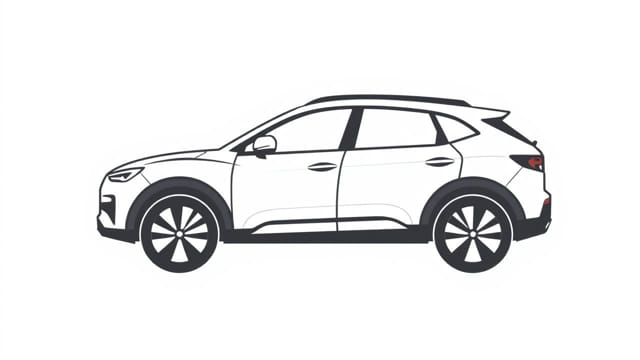What Is A Crossover Suv?
In recent years, crossover SUVs have become one of the most popular vehicle choices among drivers worldwide. From young families to solo commuters, these vehicles seem to meet the needs of a wide range of lifestyles. Their popularity is no coincidence they combine the convenience of a car with the utility of a traditional SUV. But what exactly is a crossover SUV, and how does it differ from other vehicle types? Understanding this term is essential for anyone exploring vehicle options in today’s market.
Understanding the Definition of a Crossover SUV
What Is a Crossover SUV?
A crossover SUV, often simply called a crossover, is a vehicle built on a car-based platform but designed with the appearance and utility of a sport utility vehicle (SUV). Unlike traditional SUVs, which are constructed on truck platforms (body-on-frame), crossovers use a unibody structure. This means the frame and body are a single piece, much like a regular passenger car.
The Origin of Crossovers
The crossover emerged in the late 1990s and early 2000s as a response to growing consumer demand for vehicles that offered better fuel efficiency and handling than trucks, yet more cargo space and versatility than sedans. One of the earliest popular models was the Toyota RAV4, which helped define the category.
Key Features of a Crossover SUV
Design and Structure
Crossovers are known for their unibody construction. This allows them to be lighter and more fuel-efficient than truck-based SUVs. The design typically includes a higher ride height, improved visibility, and a spacious cabin especially useful for families or long-distance travelers.
Performance Characteristics
While crossovers do not have the same rugged off-road capabilities as traditional SUVs, they often come with optional all-wheel drive (AWD), making them suitable for light off-road use or driving in adverse weather conditions. Their driving dynamics are generally smoother and more car-like, offering better handling on paved roads.
Interior Space and Flexibility
One of the biggest draws of a crossover SUV is the ample passenger and cargo space. Many models offer fold-flat rear seats, multiple storage compartments, and a roomy interior, which makes them ideal for road trips, shopping, or transporting sports equipment.
Benefits of Driving a Crossover SUV
Fuel Efficiency
Because crossovers are lighter than traditional SUVs, they usually offer better fuel economy. This is a major selling point for buyers who want the look and function of an SUV without the high gas bills.
Comfort and Ride Quality
With suspension systems similar to sedans, crossovers provide a smoother ride. The seating position is higher, giving drivers better visibility, which enhances safety and confidence on the road.
Versatility
Whether you need space for kids, pets, groceries, or luggage, crossovers can handle it all. Some models even offer third-row seating, making them suitable for larger families. The versatile design suits both city driving and weekend getaways.
Safety Features
Many crossover SUVs come equipped with the latest safety technologies, such as:
- Automatic emergency braking
- Blind-spot monitoring
- Rearview cameras
- Lane-keeping assist
- Adaptive cruise control
These features help protect drivers and passengers, making crossovers a smart choice for safety-conscious consumers.
Popular Crossover SUV Models
Examples on the Market
Numerous automakers have developed successful crossover models. Some of the most popular include:
- Toyota RAV4: Known for reliability and efficiency
- Honda CR-V: Offers spacious seating and advanced safety
- Subaru Forester: Features standard all-wheel drive
- Ford Escape: Offers hybrid options
- Mazda CX-5: Praised for sporty performance and luxury feel
Luxury Crossovers
Luxury brands have also embraced the crossover trend. Vehicles such as the Audi Q5, BMW X3, and Lexus RX blend premium materials with practical design, offering a higher-end crossover experience.
Differences Between Crossovers and Traditional SUVs
Platform and Construction
As mentioned earlier, the primary difference lies in the platform. Traditional SUVs are built with body-on-frame construction, similar to pickup trucks. Crossovers, in contrast, use unibody construction, like cars.
Capability Comparison
Traditional SUVs generally offer better towing capacity and off-road ability. Crossovers focus more on on-road performance, comfort, and efficiency. The best choice depends on your lifestyle and driving needs.
Fuel Economy and Size
Crossovers are usually more fuel-efficient and easier to maneuver in tight spaces like city streets or parking garages. Traditional SUVs tend to be larger, heavier, and less fuel-efficient.
Are Crossovers Right for Everyone?
Who Should Consider a Crossover SUV?
A crossover is ideal for:
- Families needing extra space
- Drivers who value comfort and efficiency
- People who occasionally drive in snow or on gravel roads
- Those who want the aesthetic of an SUV without the bulk
When a Traditional SUV Might Be Better
If you frequently tow heavy trailers, travel off-road, or need more rugged durability, a traditional SUV might be a better fit. Models like the Toyota 4Runner or Ford Expedition offer capabilities that crossovers simply can’t match.
Future of Crossover SUVs
Electric and Hybrid Variants
As the auto industry shifts toward sustainability, many manufacturers now offer hybrid or fully electric crossovers. Examples include the Toyota RAV4 Prime (a plug-in hybrid) and the Ford Mustang Mach-E (an all-electric crossover).
Smart Technology Integration
Modern crossovers are packed with smart features like touchscreen infotainment systems, wireless Apple CarPlay and Android Auto, and over-the-air software updates. These features appeal to tech-savvy consumers and enhance the driving experience.
The crossover SUV is a versatile and efficient vehicle option that bridges the gap between sedans and traditional SUVs. With its car-based structure, it offers smooth handling, increased fuel economy, and enough space for both passengers and cargo. Whether you’re commuting to work, picking up the kids, or taking a weekend road trip, a crossover SUV delivers a reliable and flexible solution. As automakers continue to innovate with electric drivetrains and cutting-edge tech, the crossover’s popularity is set to grow even further, solidifying its place in the automotive landscape for years to come.
